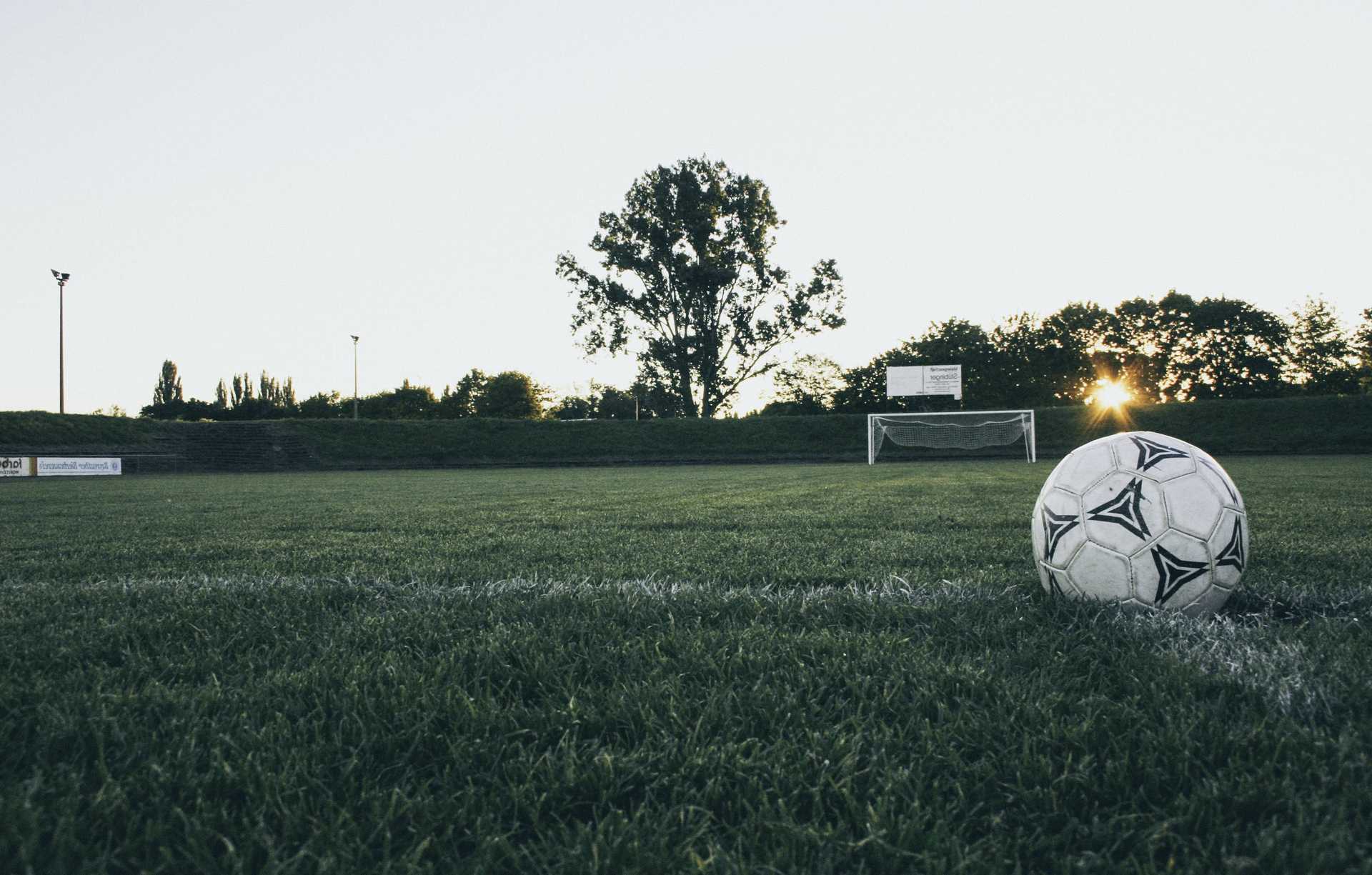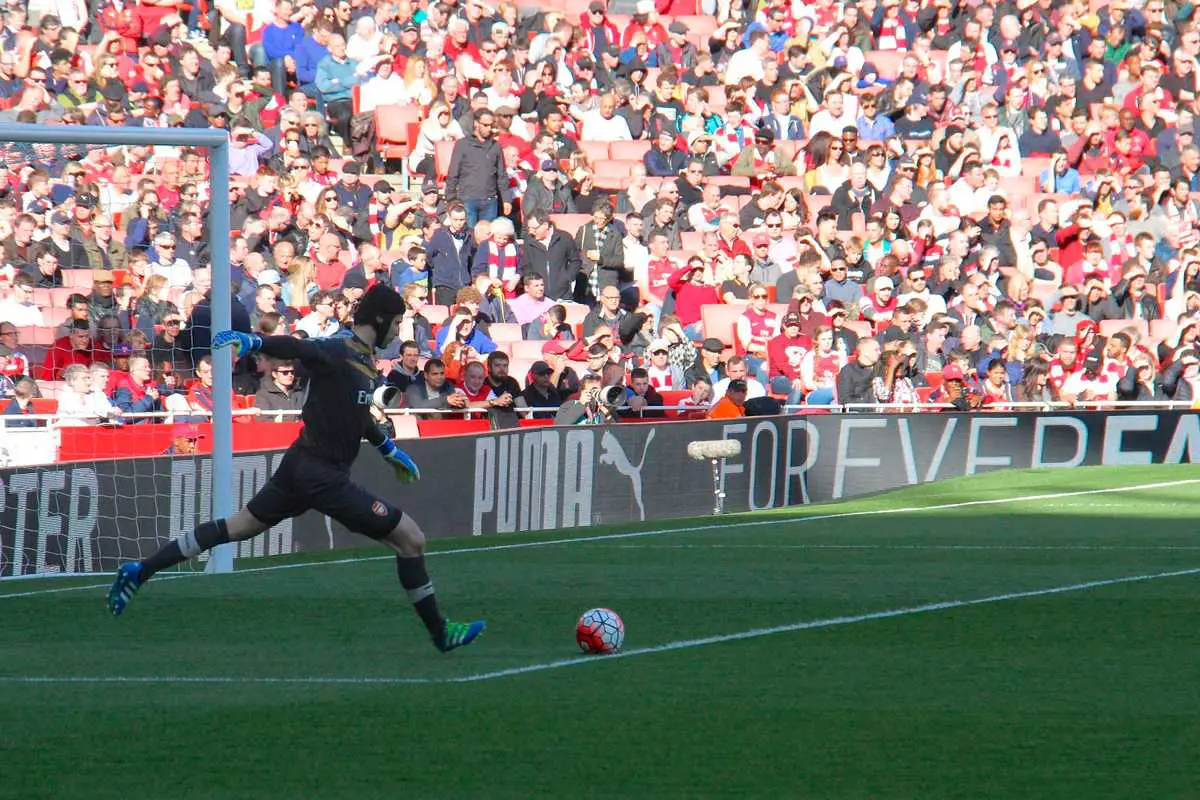What Is a Goal Kick in Soccer?

A goal kick is one of many ways that the game restarts once the ball leaves the field of play. The goal kick provides a way of returning possession to the defensive team after an unsuccessful attack from the opposition team.
When Is a Goal Kick Awarded?
If the whole of the ball exits the field by crossing over the goal line (or byline), there are two options for restarting play. One option is a goal kick, and the other is a corner kick. If the last player to touch the ball before it crosses the goal line was on the offensive team, then a goal kick is awarded. Conversely, if the last touch was from a player of the defensive team, then a corner kick is awarded. It does not matter if the touch that causes the ball to cross the goal line was deliberate.
"A goal kick is awarded when the whole of the ball passes over the goal line, on the ground or in the air, having last touched a player of the attacking team, and a goal is not scored."
Goal Kick Procedure
- The ball must be stationary when a goal kick is taken.
- The goal kick can be taken from any point within the goal area.
- Any player from the defensive team may take the goal kick.
- The ball becomes in play when it is kicked and clearly moves.
- Opponents must be outside of the penalty area until the ball is in play.
Goal Kick Offenses
- The kicker may not touch the ball twice before it has touched another player. If the kicker takes the goal kick and then takes a second touch, an indirect free kick will be awarded.
- If an opponent is inside the penalty area when the goal kick is taken, the kick can be re-taken.
- If an opponent did not have time to leave the penalty area before the goal kick was taken, the referee can allow play to continue.
- If a player enters the penalty area and commits a foul, the goal kick will be re-taken, and the offender may be cautioned or sent off, depending on the offense.

Petr Cech taking a goal kick for Arsenal | flickr photo by Ronnie Macdonald shared under a Creative Commons (BY) license
Goal Kick Rule Change
In 2019 there was a significant change to the rules regarding goal kicks, which had a big impact on the way that teams can restart play. The previous rule stated that "The ball is in play when it leaves the penalty area". This meant that no other player could be inside the area when the kick was taken. If a teammate did receive the ball inside the penalty area, the kick would need to be retaken. This rule meant that it could be quite difficult for the kicker to find a free player to pass to, as players from both teams could receive the ball in the same area of the field.
This rule was changed to read "The ball becomes in play when it is kicked and clearly moves". This change allows the teammates of the kicker to receive the ball inside the penalty area, while the opposition players still have to remain outside of the penalty area until the ball is in play. This means that the kicker can play a short pass to a teammate, with no fear of the ball being intercepted by the opposition.
Goal Kick Strategies
Short Pass
Teams that like to keep possession of the ball prefer to take a short goal kick, and begin their advance toward the opposition goal starting from their own goal line. To use this strategy, the players must have excellent passing skills, and be very comfortable on the ball when under pressure.
The advantage of taking a short goal kick is that you are guaranteed to keep possession after the initial kick. The disadvantage is that it becomes very difficult to keep that possession, and if it is lost, the opposition will be in a great position on the field to have a good goal-scoring opportunity. Using the short goal kick strategy can be very risky when the opposition decides to implement a full press.
Long Pass
If the team is not comfortable with keeping possession in their own penalty area, or they are playing against a superior team, it may be a much better strategy to take a long goal kick.
The advantage of the long goal kick is that it will be received in the opposition's half of the field, so if possession is lost, it will not be in a dangerous area of the field for a counter-attack. The disadvantage is that it is much more difficult to keep possession with such a long kick. Possession is usually determined after an aerial duel between two players, which can be a matter of chance if both players are equally matched.
Who Can Take a Goal Kick?
There are no restrictions on who can take the goal kick, however, in elite soccer, the goalkeeper will almost always take the goal kicks for the team. In amateur soccer, it is more common for one of the outfield players to take the kicks, as sometimes the goalkeepers do not have a good kicking technique.
If the goalkeeper picks up an injury during the game and does not feel that they are able to take the kicks anymore, then a defensive player will usually take over the responsibility. If an outfield player takes a goal kick, it is important to note that from the moment the ball is kicked, the outfield player will most likely be playing all of the opposition players onside, so it is important for them to quickly move their position further forward as soon as they can.
FAQs
Can you score a goal directly from a goal kick?
Yes, you can score a goal directly from a goal kick. However, you cannot score an own goal directly from a goal kick. In the unlikely event that the ball enters the kicker's goal directly, then a corner kick is awarded to the opposition
Can you be offside from a goal kick?
No. Any player that receives the ball directly from a goal kick cannot be penalized for offside.
Does a goal kick have to clear the box?
No. The previous rule stated that the ball only becomes active once it has left the penalty box, however, this rule was changed in 2019, and now the ball becomes active as soon as the ball is kicked.